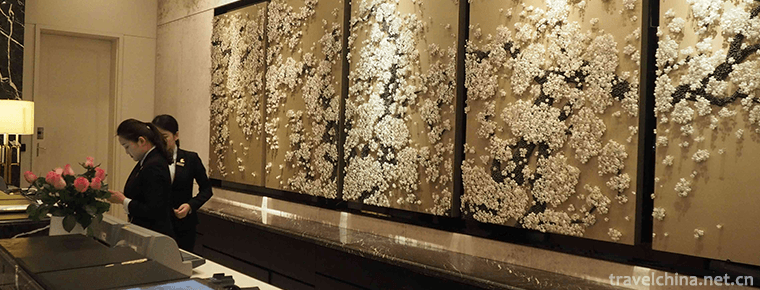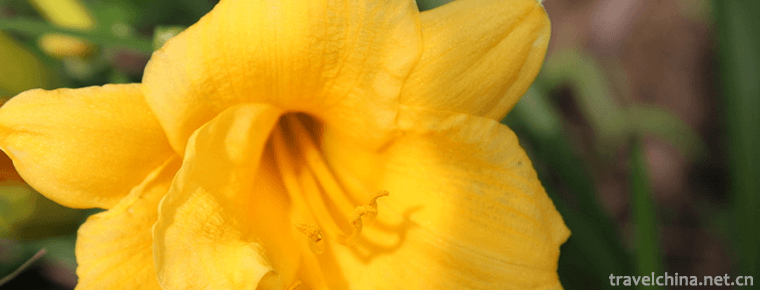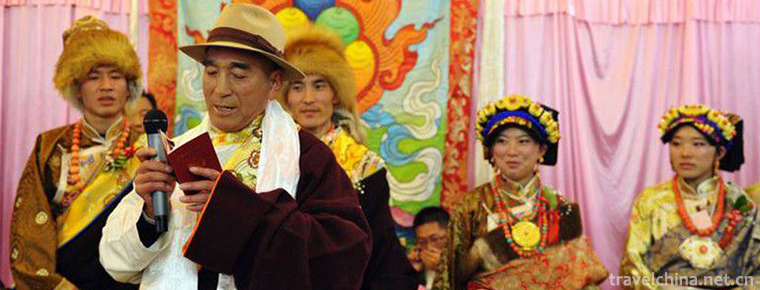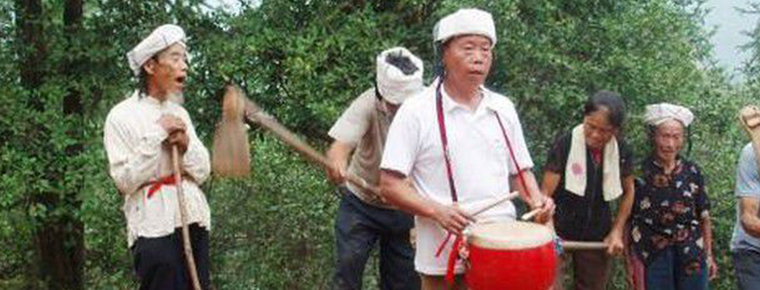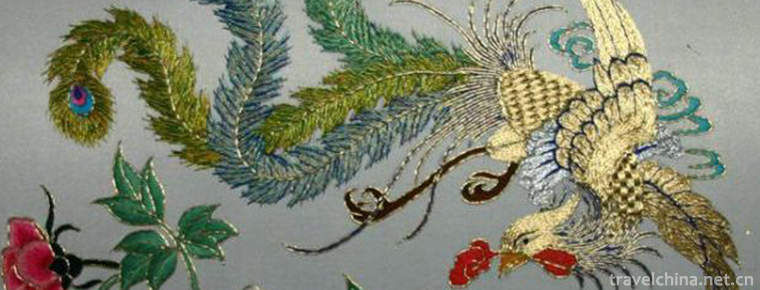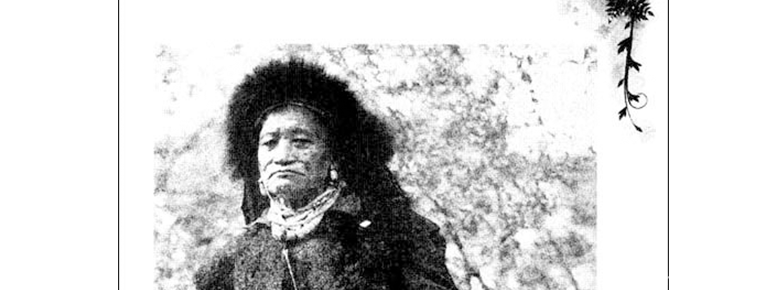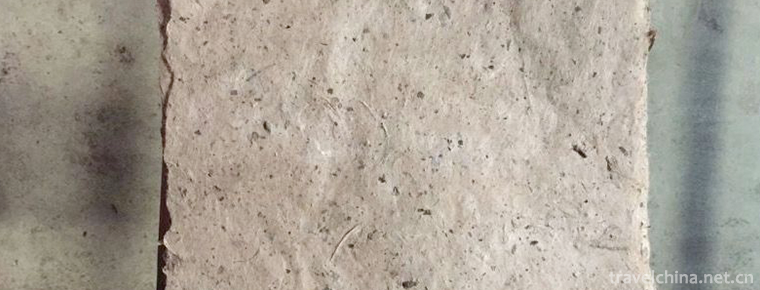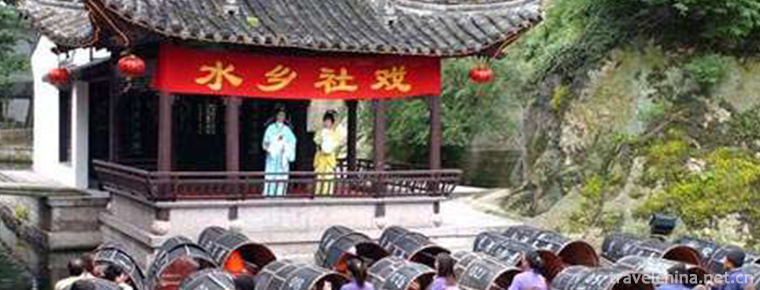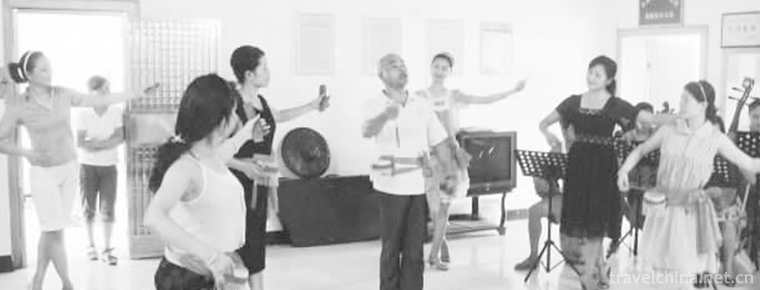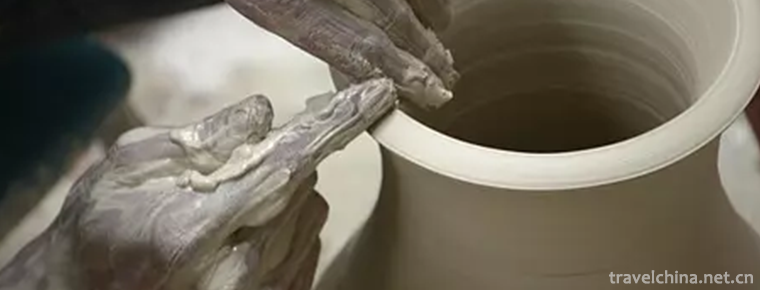Chibi ancient battlefield
The ancient battlefield of Chibi in the Three Kingdoms, where the battle of Chibi took place, is located on the South Bank of the Yangtze River in the northwest of Chibi City, Hubei Province (located on the South Bank of the middle reaches of the Yangtze River, Wuhan in the north and Yueyang in the south). It is the only ancient battlefield in the seven battles of "winning more with less, winning with weakness" in ancient China.
Chibi Jitou Riverside Cliff is also inscribed with the word "Chibi", which is said to be written by Zhou Yu. Therefore, it is also called "Zhou Lang Chibi", which is the earliest cultural relic in Chibi. The stone statue of Zhou Lang is proud of the Yangtze River and full of ambition to point out the picturesque rivers and mountains; on the typhoon, the feather fan of Zhuge Wuhou flickers lightly and borrows the east wind ingeniously to lend out a war that has shocked the past and sparkled the present for thousands of years, and to lend out a new pattern of Three Kingdoms tripartite; under Feng Xiao'an, the wisteria and ginkgo are still verdant, and Mr. Feng Xiao lived in seclusion and presented them in succession. Planning: One dragon and one phoenix, gathered in Chibi, let this land soar into the sky with the potential of Wolong and Phoenix chicks, and draw a rich and colorful brush in the long river of history.
Now it is Chibi Scenic Spot, which is a national 5A Scenic Spot. Its main landscapes are: Chibi Cliff Sculpture, Zhou Yu Sculpture, Baifeng Typhoon, Fengxian'an, Yijiang Pavilion, Chibi War Exhibition Hall, Chibi Stele Gallery, Millennium Ginkgo Biloba, Three Kingdoms Sculpture Garden and so on.
On October 17, 2018, the Ministry of Culture and Tourism intends to designate it as a national 5A tourist attraction.
historical background
The ancient battlefield of Chibi in the Three Kingdoms was the site of the battle of Chibi in that year. In the thirteenth year of Jian'an (A.D. 208), Cao Cao led 260,000 troops to the south, which was like a broken bamboo, Lianke Xinye and Xiangyang. From Jiangling to the east of the Yangtze River, he fought with Sun Quan and Liu Bei's 50,000 coalition forces in Chibi. After the defeat, Cao returned to the north of the Yangtze River and garrisoned troops. Wulin (today's Wulin Commune in Honghu County) is across the river from Sun and Liu Lianjun.
Later, Zhou Yu used Huang Gai's suggestion to attack Cao Jun with fire. At that time, the southeast wind was in a hurry, and the fireboat rushed directly to the Cao Jun camp with the help of the wind. In a moment, Cao Ying's fire surged into the sky, a sea of fire, Cao Jun's great defeat, Sun Liu Lianjun took the opportunity to attack. Cao Cao Cao led the rest of the army to Jiangling defeat via Huarong Road (now identifying northwest of the county). This battle became a famous classical battle in Chinese history and left a brilliant mark in the history of ancient Chinese war.
Operational strategy
Bitter meat tactics/counter-tactics: After a long journey, Cao Jun was exhausted and his soldiers had been sick. Cao Cao moved the whole army to the north of the Yangtze River to facilitate advance and retreat. And Jiangdong soldiers across the river between Wulin and Chibi. Because of the long-standing stalemate, Sun Liu's Allied Military Headquarters put forward Huang Gai's "Fire Attack" campaign plan. Huang Gai came out and sent a book to Cao Gong in order to surrender fraudulently. Cao Cao regarded Zhou Yu and Huang Gai's conspiracy as Liu Cong and Quyue's return to Jingzhou because of a series of previous victories, which also seriously affected the idea of Xun You, a strategist and general. He was happy to see Huang Gai descending from the water.
Linkage Design/Fire Company: On November 13, the thirteenth year of Jian'an (208), Huang Gai took dozens of battleships loaded with dry silvergrass and dried wood, filled with oil, and sailed on the river in the Southeast wind. Each ship speeded up sequentially to the North bank. Cao Gong and his officials all went out to watch Huang Gai's coming and falling. Only Cheng Yu, a counselor, found out that the coming ship was light and floating in the emergency of Dongfeng. He decided that it was not a grain ship. He was afraid of an accident. He asked Cao Gong to pay attention to the enemy's scheming. But it was too late. The ship was only two miles from the North bank. The warship under Huang Gai's command ignited at the same time and sailed like an arrow in the gale, striking the water village of Cao Jun. The boat was chained and could not be dismantled. Fire danced with the wind, and the camps on the shore also caught fire. The flames rose to the sky, and Cao Jun fell into a sea of fire. On the South bank, Sun Jun waved flags and shouted, cheering and drumming.
Wulin battle: Cao Jun's water village and onshore camp on the North Bank of the Yangtze River were suddenly attacked by wind and fire vessels, causing a wave of confusion. Sun Jun on the south bank also sent more troops across the river to participate in the fighting and expand the results. The two sides fought fiercely in the flames. Cao General Zhang Liao command headquarters elite soldiers, repulse the fierce attack of Huang Gai. Xu Huang can also calm down in disorder and fight the whole army. But at this time, Liu Bei's Yuzhou Army and the commanders Zhang Fei and Zhao Yun launched a fierce attack on Cao Jun, and Liu Bei personally took command of the battle against Yashi. Cao Jun suffered heavy losses from the enemy on his back and abdomen. When Sun and Liu had not yet joined forces, they withdrew from Wulin and turned towards Huarong Road.
Huarong ambush: After Cao Cao led the remnant into Huarong Road, he encountered heavy rain, strong wind, mud and blockage, and the road was impassable. When soldiers are sent to fill the pavement with grass, the horse can pass. The soldiers were traveled by men and horses, and the dead were everywhere. Liu Jun ambushed troops and missed the best attack. Cao Cao's troops are out of danger. When Cao Cao withdrew from Jiangling, he said with a lingering fear, "Liu Bei, I'm Li too, but I have to plan (prepare and start) a little later to set fire to him early. I'm totally classless (eliminated). Although Cao Cao's army was not totally destroyed, it lost most of its strength in the south. At this time, it was no longer able to unite the north and south, thus ending the Red Cliff War between Cao Sun and Liu.
Postwar influence
After the Chibi War, the situation of Wei, Shu and Wu Dingshi emerged, that is, the period of tripartite confrontation in history. Cao Cao, with an absolute superior force (about 260,000), lost a lot to Sun Liu's combined absolute inferior force (40,000-50,000). During the Red Cliff War, political, military and diplomatic struggles took place. Therefore, the battle of Chibi became one of the most famous battles in Chinese history and attracted the attention of both Chinese and foreign people.
Soldier's Word: To win more with less, to win more with weakness, the battle of Chibi must be counted. The Chinese believe that it is only in Chibi that the "Tao, Heaven, Earth, General and Fa" are excellent. Foreigners believe that it is only in Chibi that we can appreciate the mystery of Oriental culture.
Chibi Ancient Battlefield Scenic Spot of the Three Kingdoms is the only ancient battlefield site that still exists in the seven major battles in ancient China. It has passed the acceptance of 5A grade scenic spots by the National Tourism Administration. The main landscapes are: Chibi Cliff Stone Carving, Wucai Temple, Zhou Yu Statue, Wind-worship Platform, Fengxiao'an, Yijiang Pavilion, Wangjiang Pavilion, Chibi War Exhibition Hall, Chibi Stele Gallery, Millennium Ginkgo Biloba, Three Kingdoms Sculpture Garden, etc.
War personnel
Participating troops and
personnel
Cao Jun:
General Commander-Cao Cao (Prime Minister and Herdsman of Jizhou); Chief of Staff-Xun You (Chinese Military Division); Counselor-Jia Huo (Taizhong Doctor), Cheng Yu (General Fenwu); General-Cao Ren (General of the Southern Expedition), Cao Hong (General Li Feng), Zhang Liao (General Dangkou), Zhang Jaw (General Pingdi), Xia Hou-tong (General Fubo) Jun, General Li Dian, General Huwei, Yujin, Yuejin, Xu Huang and Xu Zhu.
Sun Jun:
General Commander-Zhou Yu (Left Dudu Governor); Deputy Commander-Cheng Pu (Right Dudu Governor), Lu Su (Zan Jun Academy Lieutenant); General-Huang Gai (Wufeng Lieutenant General), Han Dang (Lieutenant General), Zhou Tai (Lieutenant General), Lingtong (Lieutenant Sima of Other Departments), Dong Department (General of Other Departments), Lu Meng (Lieutenant of Pingbei), Xu Sheng (Lieutenant of Other Departments). Ganning.
Liu Jun:
General Commander-in-Chief Liu Bei (Leading General Yuzhou Mu and Zuo); Chief of Staff Zhuge Liang (Military Division and General Zhonglang); Counselor Sun Qian (Engaging in Zhonglai); General Guan Yu (Preferred General), Zhang Fei (General Zhonglai), Zhao Yun (General Lemen).
geographical position
The Chibi ancient battlefield scenic spot of the Three Kingdoms is located on the South Bank of the middle reaches of the Yangtze River, north of Wuhan, capital of Hubei Province, and south of Yueyang, a famous cultural city. Close to the cliff, brown stone split, a meter square big character "Red Cliff" striking. The scenic spot is the only ancient battlefield site that still exists in the famous battlefield in ancient China. It is also a national 5A class tourist attraction and a key cultural relic protection unit.
Climate condition
Located on the South Bank of the middle reaches of the Yangtze River, Chibi Ancient Battlefield Scenic Area of the Three Kingdoms belongs to a subtropical marine monsoon climate with warm and humid climate, abundant rainfall, distinct seasons and abundant sunshine. The air quality of the urban area is stable within the second level of the Environmental Air Quality Standard throughout the year. The annual average temperature is 16.9 degree C, and the annual average frost-free period is 247-261 days. Rainfall ranges from 1251 to 1608 mm.
Main attractions
Chibi Mountain, Nanping Mountain and Jinlu Mountain are connected in the ancient battlefield of the Three Kingdoms.
Cliff inscription in Chibi
On the cliff of Linjiang in Chibi Mountains, inscribed with the word "Red Cliff", the letters are 150 cm long and 104 cm wide. It is said that during the Red Cliff War, Sun Liu Lian's arms burned Cao Jun's warships, and a sea of fire on the surface of the river, reflecting the red cliff of the river, Cao Jun's defeat, Sun Liu Lianjun carved Jiuqinggong, excessive drinking and Zhou Yuti's sword on the cliff. Under the word "Red Cliff", because it is a giant magic pen, cover thousands of jun, the handwriting unexpectedly through the rocky cliff to the mountain, reflecting the reverse of the word "Red Cliff". According to Xie Fangde's Preface to Red Cliff Poetry, the Song Dynasty, it is said that "to go down the river to Dongting, boat crossing Puqi, see the word"Red Cliff"in stone. Ming orthodox "Jiayu County Chronicle" contains: "Chibi... To the west of the wall, there is the word "Red Cliff" on it. Li Bai, a poet of the Tang Dynasty, wrote during his visit to Chibi: "The Second Dragon War is a battle between male and female, and the Red Cliff building is swept away." The fiery fire shines on the sea of clouds, and Zhou Yu breaks Cao Gong here." Famous poems.
Temple of Wu CAI
Guan Yu is not only a historical figure, after thousands of years of historical evolution, but also an invincible existence in the minds of the common people. From ancient times to now, it has been chained and worshipped by businessmen everywhere. Guan Yu statue has great prestige on all sides, and Danfeng's eyes lie on silkworm's eyebrows. It is said that Guan Yu statue can't open angrily and roundly. If the god's eyes open, it will kill people (this is one of them). After Guan Yu became famous, he was gradually worshipped not only as a Taoist god, but also as a guardian of Buddhism.
Guan Gong is righteous and upright. He is the best at controlling evil spirits, eliminating ghosts and evil spirits and preventing villains. If there is a long-term sick person in his family or his health is not good, he can invite a holy image to guard his house. Therefore, Guan Yu is also known as "Guan Sheng Emperor", or "Guan Di" for short. Now Taoism mainly worships him as a god of wealth. 。 In addition to "curing illness and eliminating disaster, driving away evil, punishing rebellion and inspecting ghosts", Guan Gongxiang was also "ordering Lu, sheltering businessmen, recruiting wealth and treasures", and was worshipped as the God of martial wealth because of his loyalty.
Wing Kiang Ting
Chibi Mountain Linjiang Jitou, there is a pavilion, covered with glazed tiles, six pillars, hexagonal, tower-shaped spire, Chibi Mountain, Tieshan like Kunpeng wings named Yijiang Pavilion. Legend has it that this was Zhou Yu's command post during the Chibi War. Standing in this pavilion, you can overlook the base camp of Cao troops stationed across the river, Wulin. This pavilion, with six pillars and six corners, imitates the architectural style of the Ming and Qing Dynasties, was rebuilt in 1936. The pavilion has a couplet of couplets written by Cai Hanqing in calligraphy from the Republic of China: "The river is merciless and red, depending on the hanging of the year, who knows how to make dangerous remarks and develop hegemonic policies; the lake and mountain look green, leaving behind scenic spots, worrying about Zhou Lang's reputation and price, Lu Difeng Hui." In the battle of Chibi, the rivers here were all red by the relentless fire. Now we recall the war pictures of that year, and naturally we will recall the famous battle case of winning with less and more and with weakness. After the founding of Zan Sun Quan, the next couplet, Zhou Yu and Lu Xun, had to consolidate the foundations of the Eastern Wu Dynasty. Because both of them were in the weak crown all the year round, they were opposed by Zhang Zhao and others, while Sun Quan was able to exclude the public opinion and reuse the young generals, Fang Jianshiqigong. The evaluation of Sun Quan in The Records of Three Kingdoms by Wu Zhi is as follows: "Being able to humiliate oneself, be talented and respectful, have the wonder of Goujian, and have the outstanding talents of the heroes, so we can take advantage of Jiangbiao and achieve the cause of confrontation." The whole pair is a combination of scenery, lyricism and history chanting. By borrowing the stories of several literary ministers and martial arts in the history of the Eastern Wu Dynasty who will make contributions to the regime of the Eastern Wu Dynasty, it eulogizes the trust of the principal general in the battle of Chibi in that year.
yphoon shelter
The Wuhou Palace, also known as the Wuhou Palace, sits on the top of Nanping Mountain in the south of Chibi Shandong Province. It is built to commemorate Zhuge Wuhou's "setting up altars, borrowing Dongfeng and helping Zhou Lang" during the Chibi War. The whole building area is 310 square meters, divided into two halls and temples. The inner hall contains statues of Liu Bei, Guan Yu, Zhang Fei and Zhuge Liang. The robes are elegant and lifelike. On the left is the exhibition hall of cultural relics, which was built in 1979. There are more than 1000 pieces of cultural relics unearthed from Chibi, including knives, guns, swords, halberds, cymbals, Ge, hooks and Dongwu copper coins ("Big coin Dangqian", "Big Spring 500", "Big Spring Dangbai"), bronze mirrors of the Eastern Han Dynasty and "five baht shears" coins, as well as a large number of pottery from the Eastern Han Dynasty and the Three Kingdoms. The right "Dongfeng Pavilion" was built in 1975 for visitors to rest. This typhoon was rebuilt in 1935 and repaired in 1948.
Statue of Zhou Yushi
In Chibi Jitou, a stone statue of Zhou Yu, the governor of Dongwu of the Three Kingdoms, stands on an open flat ground to commemorate Zhou Yu's heroism during the Chibi War. The statue was erected in January 1991. Its base is 2 meters wide and 3 meters long, and the statue is 6.85 meters high. It is made of 26 pieces of granite. The stone statue with a height of 8.58 meters is the largest stone statue of a person in Hubei Province. It fully shows the heroic image of Zhou Lang in his time. Zhou Yu's sculpture combines the double advantages of Han Dynasty stone carving, Northern Wei stone carving and modern architectural art. On the positive side, when the east wind blows, the war gown floats northwest and the southeast wind of Kong Ming's altar offering coincides; on the contrary, it looks like a stone wall, which coincides with the "red wall". The base design is ingenious. The carved pattern of the knife and axe symbolizes the surge of clapping the shore. The three levels metaphor "rolling up a thousand piles of snow", which takes meaning from Su Shi's CI poems, and at the same time metaphors the triumph of the three kingdoms. The statue of Zhou Dudu holds a sword and has a heroic eye. It is not afraid to face the more than 200,000 powerful enemies of Cao Jun. The whole statue expresses Zhou Yu's heroic spirit of "heroic posture and heroic hair" incisively and vividly.
Phoenix Nest
There is a temple on Jinlu Mountain in the south of Nanping Shandong Province. It is said that during the battle of Chibi, "Mr. Fengxiao" covered the military parade books. Later generations built Fengxiao Temple to commemorate Mr. Fengxiao's contribution to the battle of Chibi. The Antang was built in the 26th year of Qingdaoguang (1846). It used to be nine major halls. Now it has the largest weight. Its building area is 300 square meters. It consists of three palaces: the first one is dedicated to the whole body of Pangtong, the second one is the Chibi Library, and the third one is the reception and lounge. On the right door sign of Fengxiao'an, there are four words "absolutely sweet and few". Legend has it that Zhuge Liang Title was given to Pang Tong during the war of Chibi. At that time, there was a small vegetable field outside the nunnery. Pangtong planted fresh and tender horseshoe vegetables in the vegetable field. There was an ancient well in the middle of the garden. The well water was clear and dry, and the hillside was covered with sweet-colored and sweet camellias. Every time the guests came, Pangtong always fried a large bowl of horseshoe vegetables, took out glutinous rice wine to entertain them. After drinking, he gave them wells and water. A cup of strong tea is brewed with fragrant tea. This kind of hospitality is praised by all the guests.
Chibi stele Gallery
Located on the right side of Baifeng Typhoon, behind Dongfeng Pavilion. Construction started in 1985. The building area of the stele gallery is 277 square meters. It was opened in May 1986. It is a four-turn gallery, reinforced concrete and wood-stone structure. The lintel of the door has four words of "Red Cliff Stele Gallery" repeated by Lear. There are 25 stone tablets inlaid in the gallery. The stone tablets and the wall are integrated. On the tablet are poems and lyrics depicted by poets of past dynasties about the battle of Chibi, written by Wang Xianju, Shen Peng, Renzheng, Guan Shanyue, Xu Jiuda and Wu Zhangshu in Beijing, Shanghai, Tianjin, Guangzhou, Wuhan and Yangzhou. In the middle of the back wall of Chibi Stele Corridor is another 4.7 meters long and 1.5 meters high. Black marble tablets, inscriptions are the handwriting of Yue Fei, the national hero of the Southern Song Dynasty. The contents are Zhuge Liang's "Execution Table". These inscriptions, such as Xing, Cao, Zhuan and Li, have their own unique features. They are exquisitely carved and meticulously carved.
Ginkgo biloba
In front of Fengxiao Ancient Battlefield Scenic Area in Chibi of the Three Kingdoms, there is a thousand-year-old tree, which is tens of meters high, its main pole is straight and tall, and its branches are flourishing. It is spectacular, and it adds much color to the surrounding scenery. It is said that the ginkgo tree has been planted by Pang Tong for more than 1800 years. This ancient tree was also the only survivor who witnessed the Chibi War. More legends have it that Pang Tong became a phoenix after his death, and Jinluan lived on this ginkgo tree.
Ginkgo biloba is a deciduous tree and a relic plant. Ginkgo tree, also known as white fruit tree, grows slowly and has a very long life. It takes more than 20 years for ginkgo tree to grow and bear fruit. It takes 40 years for ginkgo tree to bear a large number of fruit. Therefore, the nickname "Gongsun tree" has the meaning of "public species but grandson gets food". It's the longevity star in the tree. Ginkgo biloba has the value of appreciation, economy and medicine. It is a treasure all over the body. As one of the most precious species in the world, it is regarded as a "living fossil" in the plant kingdom.
River Side Pavilion
Wangjiang Pavilion is located on the top of Chibi Mountain in the ancient battlefield scenic spot of Chibi in the Three Kingdoms. In the pavilion, looking across the Yangtze River, you can see the place where Cao Cao's 260,000 troops were stationed, Wulin Zhai. Chibi Mountain is like a sword straight into the heart of the river. It is the best place to see Cao Ying. Here, retreat can be defended, attack can be attacked, so that the Red Cliff War Sun Liu Union Army occupied the absolute advantage of the terrain.
Wangjiang Pavilion is said to be the place where Huang Gai visited Caoying. Huang Gai was the elder of the three dynasties in the Eastern Wu Dynasty. He fought with Sun Jian in his early years and made great contributions to the establishment of Sun's foundation. Everyone in Dongwu respects him. Legend has it that in the battle of Chibi, Zhou Yu played chess with Huang Gai. Every time Zhou Yu walked a chess piece, he was eaten by Huang Gai. Huang Gai was very surprised. Zhou Yu pretended to have no choice but to say: I will not use it. After Huang Gai met, Mao Sui recommended himself. Therefore, in the battle of Chibi, Huang Gai did not fail to meet the expectations of the public. Cao Cao fled in a hurry when a burning Cao army disappeared from the sky. This fire took a key step for Sun Liu's final victory. After that, Sun Quan rewarded Huang Gai by discussing his merits, giving him the Taiping Lake, which was renamed "Huang Gai Lake", which has been in use ever since.
Chibi Museum
The Pavilion is a special exhibition hall with the theme of the battle of Chibi, covering an area of 2069 square meters. Construction started in 1990 and completed in 1994. The library has a sequence hall, a war situation model room, a wax story room and a literature and history reference room. The exhibits in the museum truly reproduce the humanistic history of the late Eastern Han Dynasty and the spectacular scenes of the Red Cliff soldiers of the Three Kingdoms at that time.
Preface Hall: There are three large maps on the wall of the hall: The Situation Map of Chibi War in the Late Eastern Han Dynasty, the Schematic Map of Warlord Separation, and the Map of Place Names of Peasant Uprising. The hall displays the large-scale riprap car invented by Liu Ye, Cao Cao's adviser during the wartime of Guandu, the Battle Chariot of Kong Ming, the ancient horse-drawn chariot, Liu Bei's marriage car and the clothes worn by the three Armor, helmet, weapon, etc.
Literature and History Reference Room: There are three capital restoration models, murals and tables of emperor lineage. Feudal tables of princes and Warring generals, wall charts, reproductions of cultural relics and pictures of the Han Dynasty, etc. The main reproductive cultural relics are: the restored tombs and crossbows of General Shang Wu of the Eastern Wu Dynasty, Lieutenant Chen Wenhe of Lv Hou, more than 1000 weapons such as knives, guns and swords unearthed in Chibi Mountain, and a large number of precious cultural relics of the Three Kingdoms, such as Tong coins and bronze mirrors of the Eastern Wu Dynasty.
Wax Statue Room of Three Kingdoms'Character Stories: Tongue Warfare, Confucianism, Bitter Meat Strategy, Link Plan, Jiang Gan's Books, Straw Boat Borrowing Arrows, Erqiao Embroidery Screen and Kong Ming's Wind Sacrifice, seven groups of wax statues tell us the popular stories of the Red Cliff War of the Three Kingdoms.
Three Kingdoms Sculpture Park
The stone sculptures in the sculpture garden are all well-known figures of the three countries. These distinctive figures and models of cultural relics are exquisitely captured historical scenes, funny and humorous reproduce the beautiful waves of humanism in The Romance of the Three Kingdoms, which are either flattering, dumb or imaginative. The original, simple, harmonious and natural sculpture model is situated in the bamboo room of Maolin, beside the stone tables and benches. It has rich connotation, elegant style, smooth shape, fine production, beautifying space and sublimating environment. What's more, we can better understand the splendid culture of the Three Kingdoms.
Three Kingdoms movie and TV City
In the construction of the new scenic spot, the focus is to create "a scene related to the largest Red Cliff War in China" directed by Wu Yusen, as well as hardware facilities reflecting the regional culture of Wei, Shu and Wu at that time. In software development, with the core of "Three Kingdoms Culture" which represents the stories, fighting scenes and folk customs of the three kingdoms, and with the concept of "Red Cliff Reproduction of the Three Kingdoms, Tourists Experience War in person", the three Kingdoms'temple fairs, real-life romances, folk stunts and dramas of the Han Dynasty and other artistic forms are adopted to create unique three Kingdoms' city pools. It has become an unprecedented tourist species.
In accordance with the style of the Han Dynasty, the Three Kingdoms Film and Television City is designed with heavy and steady overall design. Flowers and trees in the city are sparse and bridges are running. Shops near the shore, embellished with Maolin bamboo, flower pool shadow, like a fairyland. Everything in the Three Kingdoms City is based on the culture of the Three Kingdoms, regardless of store style, business content and personnel attire is the style of the Three Kingdoms Period. The scenic spot perfectly integrates the culture of the Three Kingdoms, the culture of the Han Dynasty and the culture of Taoism, and has a very profound cultural connotation. In terms of construction style, taking the Three Kingdoms Film and Television City as a model to expand and innovate is a very worthwhile human landscape.
Traffic information
Address of the Three Kingdoms Chibi Ancient Battlefield Scenic Spot: The Three Kingdoms Chibi Ancient Battlefield Scenic Spot is located 38 kilometers northwest of Chibi City, Hubei Province, 164 kilometers away from Wuhan City and 90 kilometers away from Yueyang City, Hunan Province.
Traffic Guidelines for Chibi Ancient Battlefield Scenic Spot in the Three Kingdoms: 1. After arriving at Chibi City by bus or train from Wuhan, get off at the passenger station by bus No. 2 and arrive at the Scenic Spot by bus from Chibi Town.
2. Drive along the Beijing-Hong Kong-Macao Expressway (the former Beijing-Zhuhai Expressway, G4) to Chibi Exit. After leaving the Chibi toll station, drive to Honghu direction to the tourist fast track. Go straight along the tourist fast track, about 38 km in the direction of Chibi ancient battlefield in Chibi Town, reaching the Chibi ancient battlefield scenic spot.










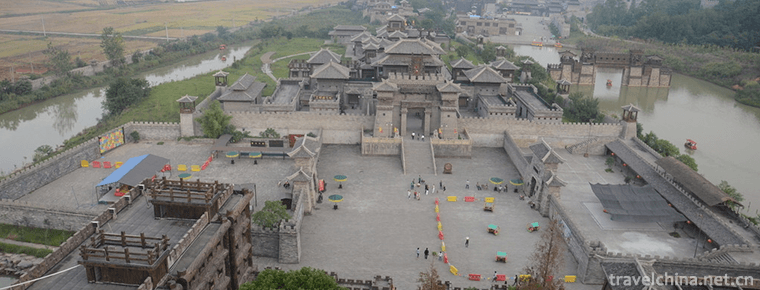
-
Longting Hotel East China Sea Shenzhen
Langting's history can be traced back to 1865. The grand opening of Langting Hotel in central London, England, has become the first truly "luxury hotel" in European history, creating a brill.
Views: 582 Time 2018-12-16 -
Hainan Tropical Wildlife Park and Botanical Garden
Hainan Tropical Wildlife and Botanical Garden is a national AAAA-level tourist attraction with the theme of popular science exposition, conservation and reproduction, sightseeing, leisure and vacation.
Views: 249 Time 2019-01-13 -
Eighteen Sayings on Tibetan Wedding Banquet
The Eighteenth Tibetan Wedding Banquet is a kind of folk oral literature spread in the Tibetan inhabited areas of the eastern agricultural region of Qinghai Province. Its manifestation is the eighteen.
Views: 108 Time 2019-04-07 -
Tea mountain chant
Yao Township Tea Hill Chant - spread in seven townships in Huangxikou area of Chenxi County, it is said that the chant song is sung when digging tea hill. When people dig tea hill.
Views: 153 Time 2019-04-15 -
Han Embroidery
Han embroidery, one of the traditional embroidery techniques with Chinese characteristics, is based on Chu embroidery, which combines the merits of various .
Views: 171 Time 2019-05-02 -
Legend of the Ancestors of the Loba Nationality
The legend of the ancestors of the Loba nationality is an organic part of the life of the Loba people, a mirror of the Loba society and a way of existence of the folk life of the Loba people..
Views: 101 Time 2019-05-15 -
Maonan Fat Cover
"Fat set" is the general name of Maonan people's vow-making activities. It prevailed in the Ming and Qing Dynasties. At the beginning, Maonan people used Nuo rituals to sacrifice the heavens.
Views: 78 Time 2019-05-27 -
Mulberry Paper Making Skills
Mulberry paper is pale yellow. Mulberry paper with exquisite craftsmanship has obvious fiber structure. Mulberry paper is basically used as the page in local government books and books formed in Ming .
Views: 131 Time 2019-06-12 -
Shuixiang Opera
Shuixiang opera is a traditional folk cultural activity in Shaoxing, Zhejiang Province. Waterfront theatres are mostly built on rivers in front of temples such as land temples, so they are called &quo.
Views: 169 Time 2019-06-16 -
Yongxin Drum
Yongxin Xiaogu is one of the traditional operas in Ji'an City, Jiangxi Province, which originated from Taoism. Legend has it that it was formed in Yongxin, Jiangxi Province during the reign of Qingdao.
Views: 177 Time 2019-07-14 -
Celadon Firing Techniques of Yue Kiln
The firing history of celadon in Yue kiln has gone through the firing process of primitive, primitive and mature ceramics kilns and mature ceramics kilns (i.e. ceramics kilns). In the firing process, .
Views: 140 Time 2019-07-16 -
Thousand Buddha Cliffside Sculptures
Qianfo cliff, located 4 kilometers north of Guangyuan City, on the East Bank of Jialing River and on the ancient Shu Road of Jinniu, has a long history and exquisite carving skills. The grottoes began in the late Northern Wei Dynasty, flourished in the Tang Dynasty and ended in the Qing Dynasty. After thousands of years.
Views: 340 Time 2020-11-08
